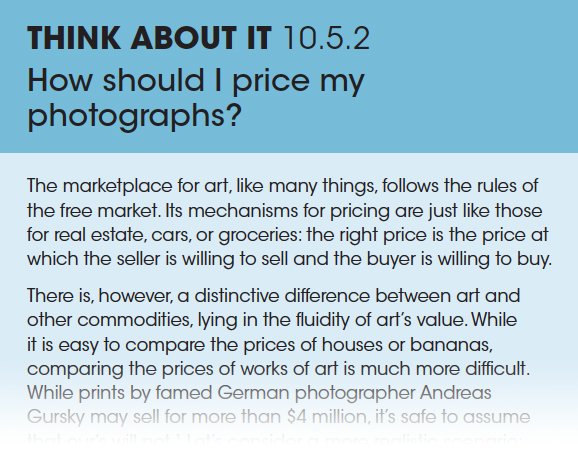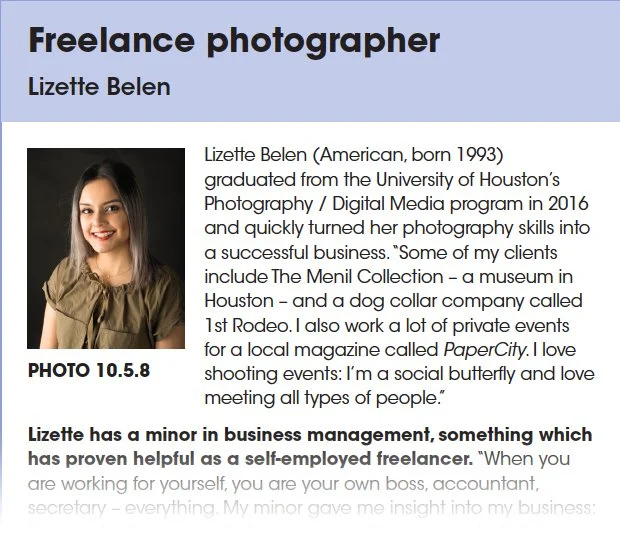Let’s Talk About Money
Happy Thanksgiving to you, our fellow photography educators. We hope your semester is coming to a soft landing.
One question that bugs almost every artist, except those lucky enough to be born with a silver spoon in their mouths, is money. From funding a project to a lifetime of financial planning, money is a non-artistic theme that can’t be ignored or an artist may never achieve a sustainable livelihood. Money also happens to be among the most under-discussed topics in the classroom. If it is ever covered at all, the discussion might just brush the surface. It’s not easy. We art educators are not financial advisors and we might not even score well in managing our own money.
This is why Chelsea and I give money a rightful place in Photography: A 21st Century Practice, by including a chapter entitled Money.
It’s what we call a minichapter and in it, we categorize three types of income for a photographic artist: from the art practice itself, from a photo-related business or job, and from jobs unrelated to photography.
Selling art is fundamentally how a practice generates income. In this minichapter, we explore some of the questions a rookie has in mind, but is often afraid to ask. Questions like: how much should I sell my prints for? We have just the discussion in focus:
Questions of agencies, nonprofit and for-profit galleries,, commissions, and more are asked and answered.
While it might be ideal of an artist to make a living by selling their art, it is by no means an easy path to walk. . Many of us have to generate income in other ways. Since we have the craft, shifting from art to commercial practice is less obtrusive than, say, bartending, hence very common. We also examine some real cases of success, like freelance photographer Lizette, a former student of mine.
Many more topics such as grants, employment, etc., are also covered.
This Money chapter is a must if Photography: A 21st Century Practice is going to live up to the mission we set out to accomplish, that is, addressing the realities of current practices.We hope you find it a good introduction to a discussion that’s much needed in every holistic art classroom.
Have a great holiday. We will talk to you in 2023!
With Passion to Teach,
Mark Chen and Chelsea Shannon


